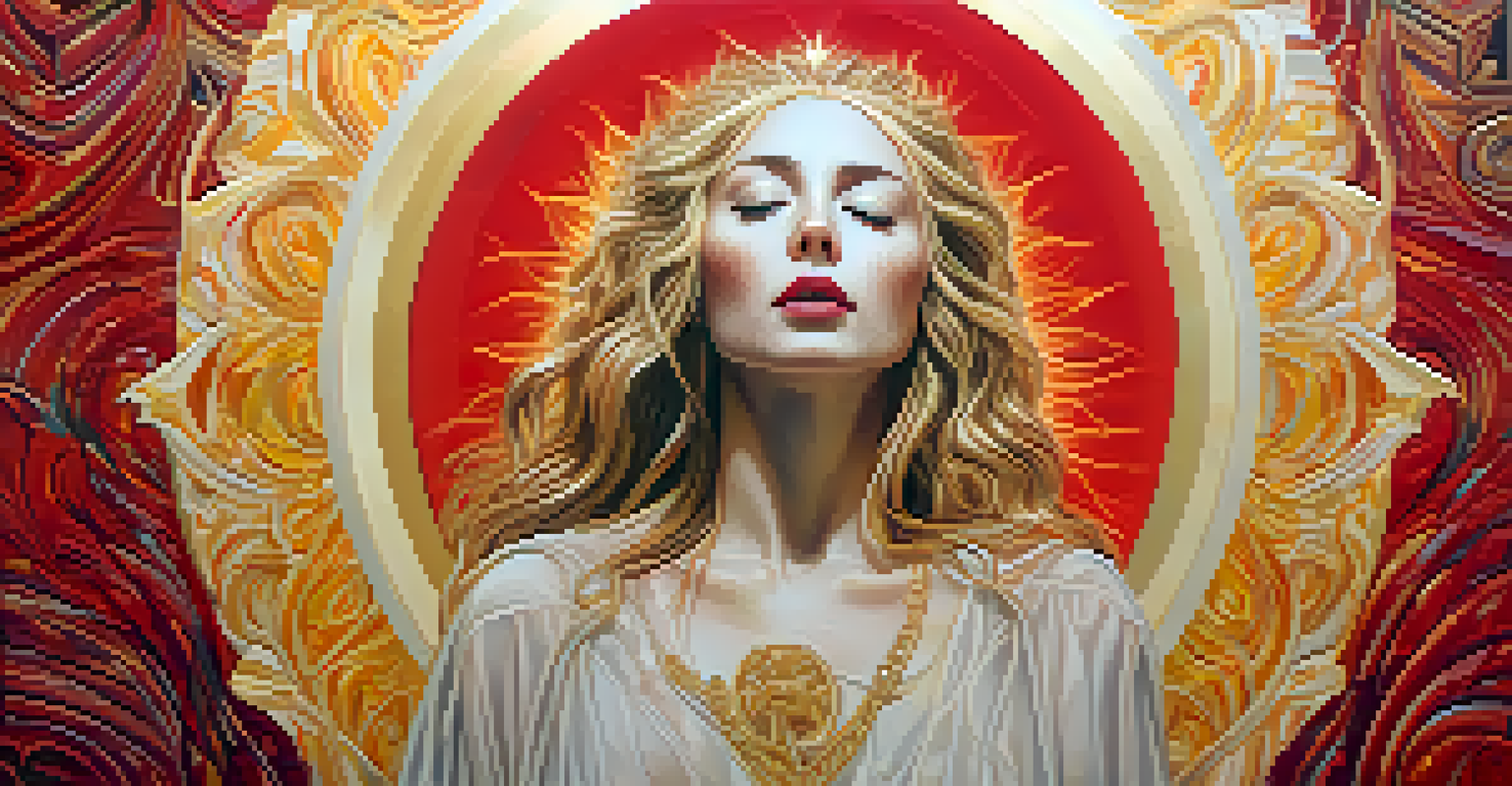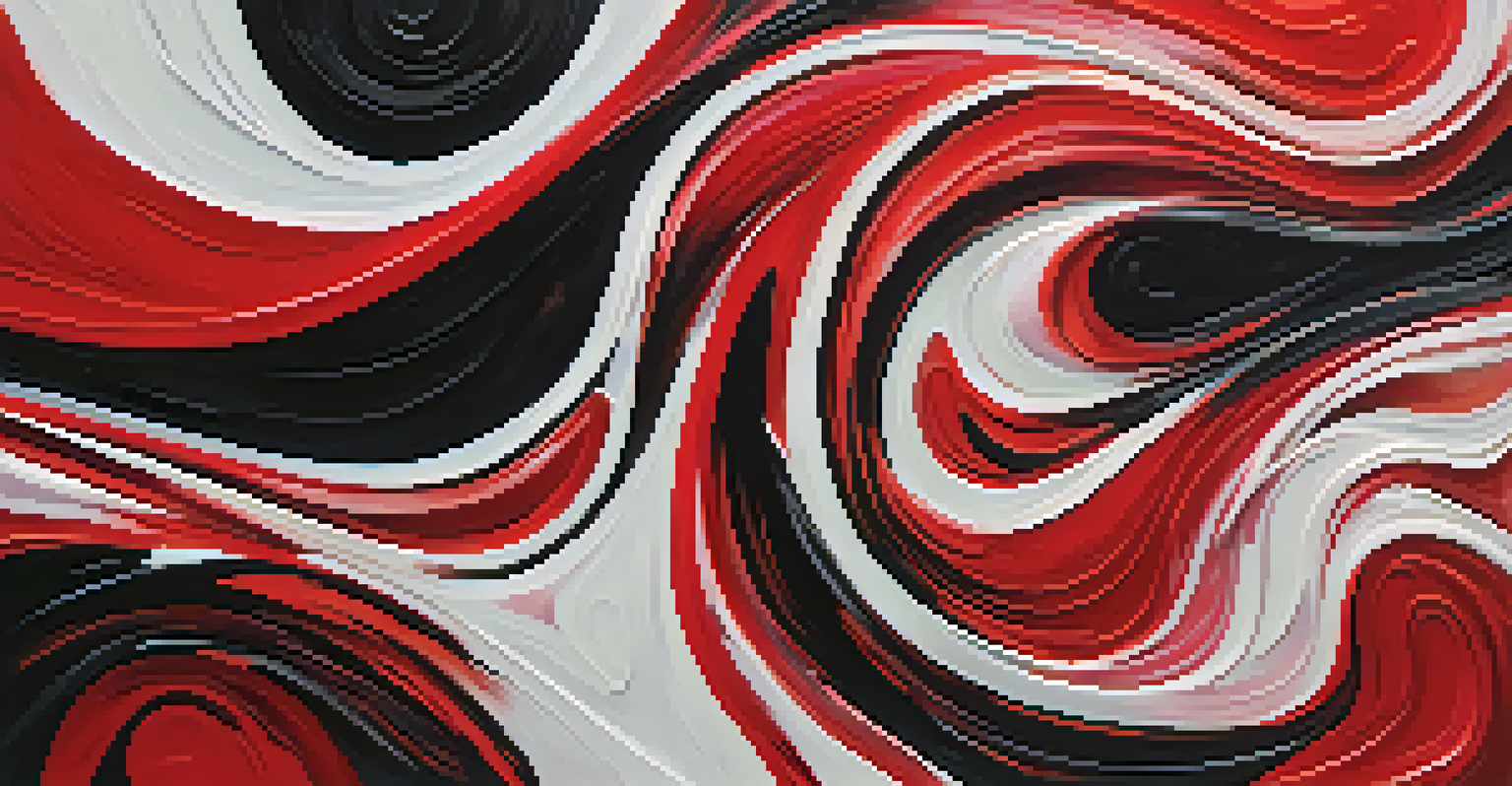Embracing Expressionism: The Artistry of Edvard Munch's Works

Understanding Expressionism and Its Origins
Expressionism emerged in the early 20th century as a powerful artistic movement. Artists sought to convey emotional experiences rather than physical reality, often distorting form and color for effect. This shift allowed for a more personal and subjective interpretation of life, becoming a reaction against the constraints of Impressionism.
Art is the most beautiful of all lies.
Munch, a pivotal figure in this movement, drew from his own tumultuous experiences and emotions to create profound artworks. He believed that art should reflect the inner turmoil of the human soul, making his work resonate on a deeply personal level. This approach set the stage for his most famous piece, 'The Scream', which epitomizes the essence of Expressionism.
By exploring the roots of Expressionism, we can better appreciate Munch's unique contributions. His ability to depict complex emotions through bold colors and exaggerated forms not only shaped the movement but also influenced countless artists who followed. Understanding these origins provides context for the emotional weight of his works.
The Impact of Personal Experience on Munch's Art
Edvard Munch's life was marked by tragedy, which deeply influenced his artistic output. Growing up in a family plagued by illness and death, these experiences instilled a sense of existential dread in him. This personal narrative becomes a lens through which we can understand the intense emotions depicted in his work.

For instance, his painting 'The Sick Child' illustrates the pain of watching a loved one suffer, a theme that permeates many of his artworks. Munch's ability to channel his grief into his art allows viewers to connect with their own emotions, creating a shared experience of vulnerability and humanity. This connection is what makes his art so timeless and relatable.
Expressionism's Emotional Depth
Expressionism prioritizes emotional experiences over physical reality, allowing personal interpretations of life.
Ultimately, Munch's personal experiences serve as a powerful catalyst for his creativity. By embracing his pain and expressing it through his art, he not only transformed his suffering into beauty but also provided a voice for those grappling with similar emotions. This authenticity resonates with audiences and invites them to explore their own feelings.
Iconic Works: Analyzing 'The Scream'
'The Scream' is perhaps Munch's most famous work, encapsulating the essence of existential angst. The painting features a figure standing on a bridge, screaming in despair against a swirling sky, which perfectly captures the chaos of inner turmoil. This iconic image has become synonymous with anxiety and alienation in modern society.
The role of the artist is to ask questions, not to answer them.
What makes 'The Scream' so impactful is its universal relatability. Viewers often find themselves reflecting on their own fears and anxieties when confronted with the haunting expression of the figure. Munch's innovative use of color and line further amplifies this emotional intensity, making the painting a powerful statement on the human condition.
Moreover, 'The Scream' has inspired numerous adaptations and parodies, solidifying its place in popular culture. This widespread recognition highlights Munch's ability to tap into shared human experiences, allowing his work to transcend time and remain relevant. In doing so, he invites us to confront our own emotions and uncertainties.
Exploring Munch's 'Madonna' and Its Themes
Munch's 'Madonna' is another significant piece that delves into themes of love, sexuality, and mortality. The painting portrays a nude woman, her face a mix of ecstasy and sorrow, surrounded by a halo of vibrant colors. This juxtaposition emphasizes the complex relationship between desire and suffering, reflecting Munch's own struggles with intimacy.
The duality present in 'Madonna' invites viewers to contemplate the nature of love and its consequences. Munch skillfully blends sensuality with a sense of impending loss, creating a thought-provoking narrative that resonates with many. This complexity is a hallmark of his work, as he often challenged conventional representations of women and relationships.
Munch's Influence on Modern Art
Edvard Munch's innovative approach to art has significantly influenced modern and contemporary artists, inspiring movements like Surrealism and Abstract Expressionism.
By exploring the themes in 'Madonna', we see how Munch's art transcends mere aesthetics. It serves as a commentary on the human experience, urging viewers to confront their own feelings about love and its intricacies. Through this lens, Munch's artistry becomes a powerful tool for self-reflection and understanding.
Munch's Use of Color and Symbolism
Color plays a crucial role in Munch's artistic expression, often serving as a vehicle for conveying emotions. He frequently employed bold, contrasting hues to evoke feelings of anxiety, passion, or despair. For example, the vivid reds and blacks in 'The Dance of Life' symbolize the intensity of love and the inevitability of death, creating a powerful visual narrative.
Symbolism is another key element in Munch's works, as he integrated various motifs to deepen the emotional impact of his art. Common symbols, such as the recurring figure of the 'screaming man', represent universal human struggles. By using these symbols, Munch allows viewers to engage with his work on a more profound level, encouraging personal interpretation.
Through his masterful use of color and symbolism, Munch transforms his paintings into emotional landscapes. This approach invites viewers to not only admire the aesthetics but also to reflect on their own experiences and feelings. As a result, his artworks become a shared journey through the complexities of life.
The Influence of Munch on Modern Art
Munch's innovative approach to art has had a lasting impact on modern and contemporary artists. His exploration of psychological themes and emotional depth paved the way for movements such as Surrealism and Abstract Expressionism. Artists like Vincent van Gogh and Henri Matisse drew inspiration from Munch's bold use of color and emotive forms.
Moreover, Munch's ability to convey complex emotions through simple yet powerful imagery has influenced countless creators across various mediums. His work encourages artists to explore their own experiences and emotions, fostering a more personal connection between the creator and the audience. This emphasis on authenticity continues to resonate with contemporary art today.
Cultural Relevance of Munch's Art
Munch's iconic works resonate in contemporary culture, symbolizing universal themes of anxiety and emotional struggle.
As we look at the evolution of art, Munch's legacy remains significant. His fearless exploration of the human condition has inspired generations, reminding us of the importance of emotional expression in art. This enduring influence ensures that Munch's work will continue to inspire and provoke thought for years to come.
Munch's Legacy in Contemporary Culture
Edvard Munch's influence extends beyond the art world and into contemporary culture. His iconic images have permeated various forms of media, from film to advertising, often symbolizing anxiety and existential dread. This widespread recognition speaks to the universality of his themes, making his work relevant in today’s fast-paced society.
For instance, 'The Scream' has been parodied and referenced in countless contexts, showcasing its enduring impact. From Halloween costumes to memes, Munch's artwork continues to resonate, allowing new generations to engage with his themes of anxiety and emotional struggle. This cultural relevance highlights the timeless nature of his work.

By embracing Munch's legacy, we can appreciate how his art reflects our shared human experiences. His ability to articulate complex emotions serves as a reminder that we are not alone in our struggles. Ultimately, Munch's artistry invites us to explore our own feelings and connect with others through the lens of expression.
Conclusion: Embracing the Power of Expressionism
In conclusion, Edvard Munch's works exemplify the power of Expressionism in capturing the depths of human emotion. His personal experiences, innovative techniques, and profound themes allow us to connect with our own feelings on a deeper level. Munch's art serves as a powerful reminder of the importance of emotional expression.
As we reflect on Munch's legacy, we see how his work continues to inspire and provoke thought. By embracing the complexities of life, he encourages us to confront our own fears and anxieties, fostering a sense of connection among viewers. This shared journey through emotion is what makes his art truly timeless.
Ultimately, by exploring Munch's artistry, we are reminded of the beauty that can emerge from vulnerability. As we navigate our own emotional landscapes, we can find solace in the knowledge that we are not alone in our struggles. Munch's work invites us to embrace our emotions and express ourselves authentically.